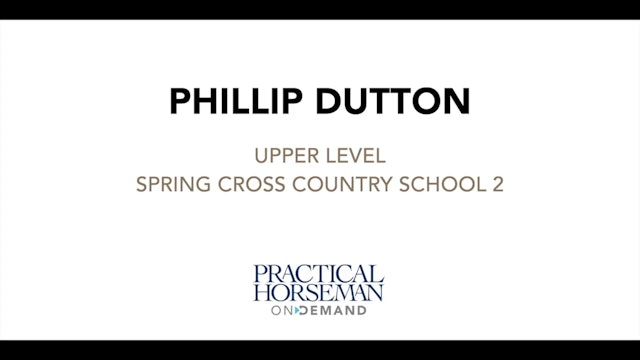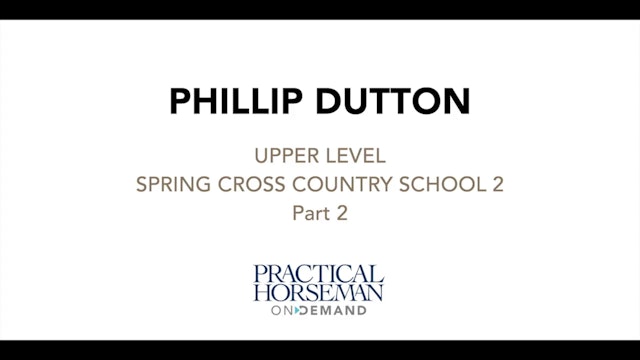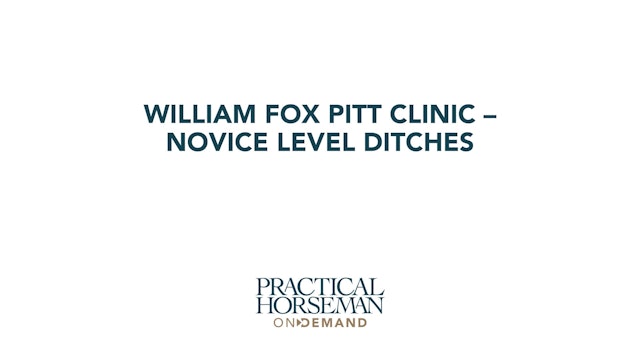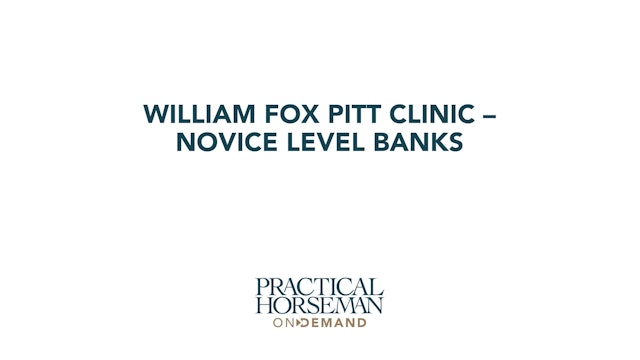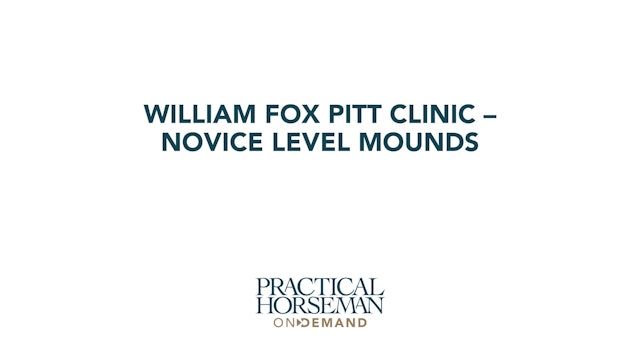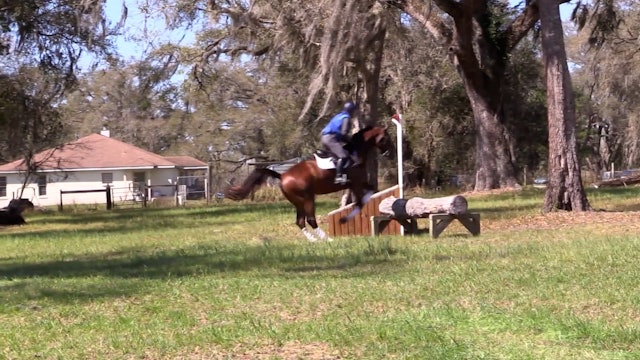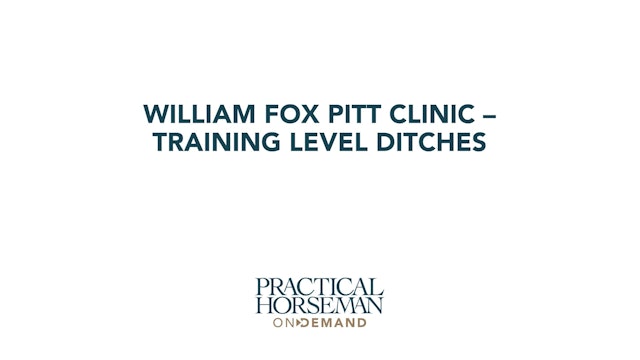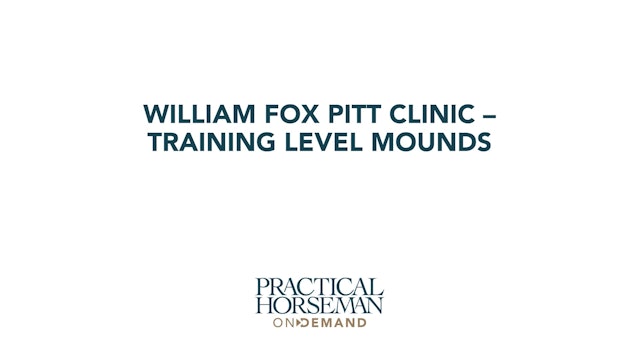Eventing
3 Seasons

Eventing, an Olympic sport, is best described as an equestrian triathlon. The sport originated as a cavalry test and is comprised of three phases: dressage, cross-country, and show jumping. Eventing tests horse and rider pairs more completely than any other. Learn from the best eventing riders and trainers in the world. Search for your favorite coach or by training topic.
-
Phillip Dutton – Upper Level Spring Cross Country School 2 – Trailer
Episode 1
Trailer: Seven-time Olympic eventer Phillip Dutton works with three upper-level riders on their first cross-country schooling of the spring. The variety of horses provides an excellent opportunity to see a range of successfully schooled fences. They school banks, ditches, corners and water.
-
Phillip Dutton – Upper Level Spring Cross Country School 2 – Part 1
Episode 2
Part 1: Seven-time Olympian Phillip Dutton schools a group of top riders on their first cross-country school of the spring. The three horses are quite different, and his advice is specific to each. One horse becomes heavy the longer the horse goes, one is very experienced and doesn’t need to jump...
-
Phillip Dutton – Upper Level Spring Cross-Country School 2 – Part 2
Episode 3
Part 2: Seven-time Olympian Phillip Dutton and three upper-level riders continue to work on keeping the rhythm and quality of the canter as they school banks, coffins and water.
-
ICP Clinic - Cross Country | David O'Conner | PART 03
Episode 4
David O'Connor continues discussing the responsibilities of the rider by asking the group why they might change a horse's speed going into a fence. The riders then introduce themselves and their horse and what level they are working at. David makes some thoughtful observation about tack, includin...
-
Trying Different Bits & Nosebands | Robin Walker
Episode 5
Part 1: Robin introduces the young rider and her talented warmblood mare who are successfully competing at one star level. He explains that the mare is dragging the rider into fences and the rider is breaking rhythm and struggling while trying to correct this. Robin shares that although in an ide...
-
Trying Different Bits & Nosebands | Robin Walker | TRAILER
Episode 6
Trailer for rider, trainer and ICP Level 4 USEA Instructor, Robin Walker's Trying Different Bits & Nosebands session. Join Robin as he works with a horse who tends to drag the rider through fences, on the cross country course. They try different bits and nosebands to try to create a softer, and m...
-
Novice Level Warm-up Course | William Fox-Pitt
Episode 7
To begin their cross-country school, William has the riders start over small, inviting jumps to warm up. He wants the horses to go in a forward and soft rhythm to stay relaxed. This gives both horses and riders the chance build confidence.
-
13:27Episode 8
Novice Level Ditches | William Fox-Pitt
Episode 8
William coaches riders over ditches alone first and then with fences before and after the ditch. His emphasis is on riding the horse straight. If the horse spooks and stops at a ditch, William wants him to jump it from a standstill. He stresses to put the leg on and stay with the horse if it hesi...
-
06:34Episode 9
Novice Level Banks | William Fox-Pitt
Episode 9
William has the riders jump up and down a bank. He tells them to imagine it is level ground with jumps and not think of it as jumping up and down. He wants everyone to stay relaxed. The canter should be collected so that even if they get deep they are still able to jump up or down the bank.
-
05:23Episode 10
Novice Level Mounds | William Fox-Pitt
Episode 10
William wants the riders to keep the same canter rhythm up and down the hills. He doesn't want them to let their horses break to trot. They need to keep cantering, keep their balance, keep their reins short and stay organized.
-
18:33Episode 11
Novice Level Water | William Fox-Pitt
Episode 11
They end the day at the water complex starting with trotting in and cantering out. When they add a jump, William tells them to keep the canter short through the water so the horses don't get too fast and flat. They finish with a short course that includes the water.
-
Training Level Cross Country - Warm-up Course | William Fox Pitt
Episode 12
William has riders start over small jumps to warm up. This gives the horses the chance to see some jumps and build confidence. He wants the horses to go in a forward and soft rhythm.
-
Training Level Cross Country - Ditches | William Fox-Pitt
Episode 13
William coaches riders over ditches first and then ditches with fences before and after the ditch. Adding the jumps makes the rider stay straight over the ditch to avoid a run out. If the horse spooks and stops at a ditch, William wants him to jump it from a standstill.
-
Training Level Cross Country - Banks | William Fox-Pitt
Episode 14
The riders next school banks as part of a series of jumps. William advises them not to let the horses get too quick. The horses should have a bouncy canter, and the rider should be sitting up straight. He wants all of the riders to keep looking up and ahead, especially on the down side of a bank.
-
Training Level Cross Country - Mounds | William Fox-Pitt
Episode 15
When galloping and jumping up and down hills, William stresses the riders controlling their own shoulders and keeping them up and back to help with their balance and their horse's balance. In addition, he wants them to keep the horses's shoulders straight so they stay straight.
-
Training Level Cross Country - Water | William Fox-Pitt
Episode 16
William puts together a small course featuring the water complex and wants the horses to keep a relaxed rhythm from beginning to end. He stresses shortening the canter through the water so the horses don't get too long and flat.
-
Young Horse Warm-up Course | William Fox-Pitt
Episode 17
William works with a group of riders on young horses. He likes starting the warm-up with low jumps so neither the horses nor the riders worry much. It is easy enough to make the jumps bigger later.
-
14:08Episode 18
Young Horse Ditches | William Fox-Pitt
Episode 18
William coaches riders over ditches first and then ditches with fences before and after the ditch. If the horse spooks and stops at a ditch, William wants him to jump it from a standstill. He reminds riders that they don't need to be nervous, but they do need to stay alert on young horses.
-
06:08Episode 19
Young Horse Banks | William Fox-Pitt
Episode 19
William has them jump up and down a bank. He tells riders to imagine it is level ground with jumps and not think of it as jumping up and down. He wants everyone to stay relaxed. He wants the canter to be collected so that even if they get deep they are still able to jump up or down the bank.
-
04:39Episode 20
Young Horse Mounds | William Fox-Pitt
Episode 20
When galloping and jumping up and down hills, William stresses the riders controlling their own shoulders. He wants to make sure the horses stay cantering, and they do not come back to trot to change leads. He says that they must learn how to change leads themselves, especially on the cross count...
-
10:22Episode 21
Young Horse Water | William Fox-Pitt
Episode 21
William has riders canter through the water with jumps at beginning and end. He stresses shortening the canter through the water so the horses don't get too long. He then has them take a small jump up and down into the water, through it and out over a jump.
-
Preliminary Cross Country - Water | William Fox-Pitt
Episode 22
The riders take their horses through the water complex. Most horses handle it in a relaxed manner. William puts together a small course featuring the water and wants the horses to keep a steady rhythm from beginning to end.
-
Marking Cross Country Jumps for Safety | John Michael Durr
Episode 23
John Michael explains the hows and whys of marking cross country jumps for safety. Course designers want the horses to be able to clearly see the top of the fence as well as where a jump begins and ends. He also explains some safety features of the jumps.
-
The Same Jump Can Be Different Heights | John Michael Durr
Episode 24
John Michael answers common questions about why cross country fences appear to be different heights and how the same jump can be used in different divisions. He explains how course designers measure cross country jumps and shows how placement of the jump on the ground (uphill vs. downhill) can ch...



